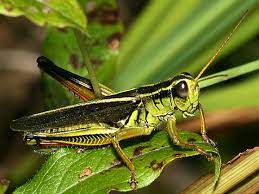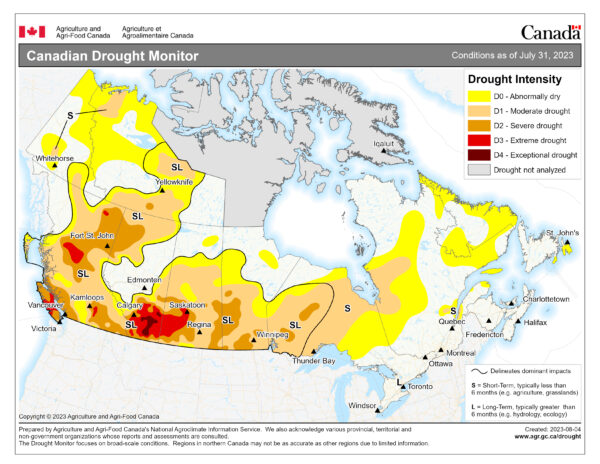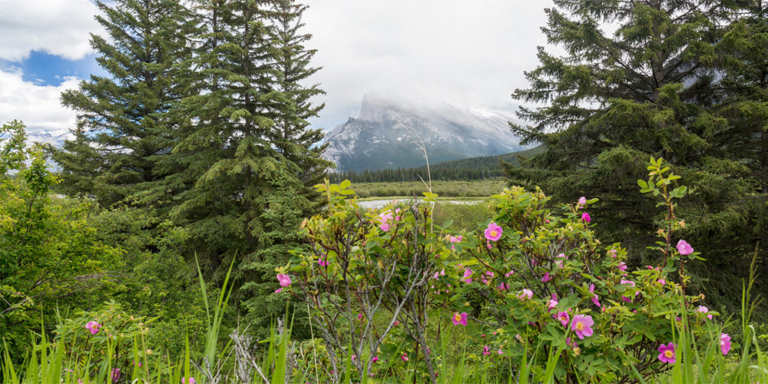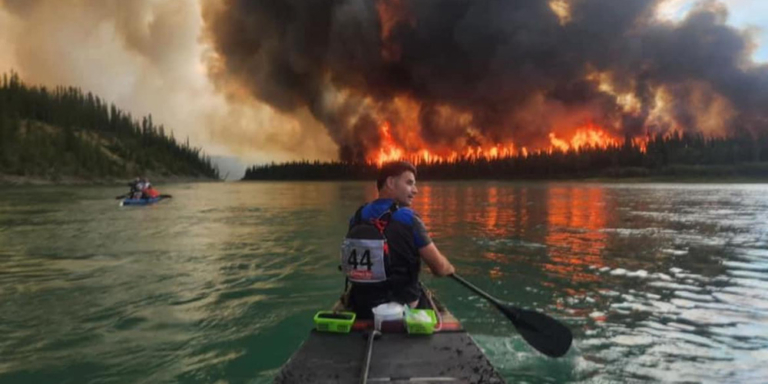Except for grasshoppers, the ongoing drought in Southern Alberta has been a pain in everyone’s side. But livestock producers in Foothills County have received a sliver of good news.
Because of extreme weather in the region, livestock producers are eligible for a federal tax deferral, which was integrated into the Income Tax Act in 1987.
If a municipality is identified as a drought area, livestock producers can put off paying income tax on the sale of breeding livestock for one year.


Deferral can continue as long as the region continues to be in a drought. Put simply, the federal program gives cattle ranchers and their finances some breathing room during tough times.
To be eligible, ranchers must be located in a Prescribed Drought Region (PDR) and have had their breeding herd reduced by at least 15 percent.
A PDR is determined with input from industries and provinces. For a region to be eligible, it must have forage yields of less than half the long-term average caused by drought or flood conditions.
According to the Government of Canada, the agency designated its initial list of drought or flood regions earlier than usual this year to help livestock producers, but was it fast enough?
More than a dozen agricultural disasters have been declared in the province.
Foothills County declared an agricultural disaster in July. Shortly after, the provincial and federal governments announced reopening enrollment in the AgriStability program.
Like a federal tax deferral, this program is meant to “protect Canadian producers against large declines in farming income for reasons such as production loss, increased costs, and market conditions.”
The AgriStability program provides financial support to producers when their income falls below a certain level due to unexpected challenges like extreme weather.
“The Government of Alberta and Agriculture and Agri-Food Canada have reopened the program recognizing that wildfires and extremely dry conditions have affected many farmers and ranchers since…,” wrote the Agriculture Financial Services Corporation.
In addition to Foothills County, numerous other counties in the province are eligible for the federal aid program. This is the third year in a row that livestock producers in Foothills County have been eligible, which says a lot.


Hot summers are nothing new for cattle ranchers in Alberta, but times are changing. Extreme temperatures caused by climate change have dried up the province like a prune.
In addition to more intense wildfires, a lack of moisture has hit producers hard. According to the Municipal District of Pincher Creek, drought conditions have impacted 50 to 90 percent of crops, pasture, and range yields.
“They’re in dire, dire shape — pastures have all but dried up. Farmers are looking for feed, some ranchers are selling their cows right now because there’s no grass, and feed is over $300 per tonne, an all-time high,” said Pincher Creek reeve Rick Lemire.
A federal tax deferral and financial aid are great, but what’s the long-term solution?
Producers can’t be expected to thrive, let alone survive in drought conditions.
According to the Climate Atlas of Canada, climate models show that Canada’s agricultural regions will see drier summers and wetter springs and winters.
That means producers will have to deal with too much water during the seeding season and too little water during the growing season. What we need is climate action.






